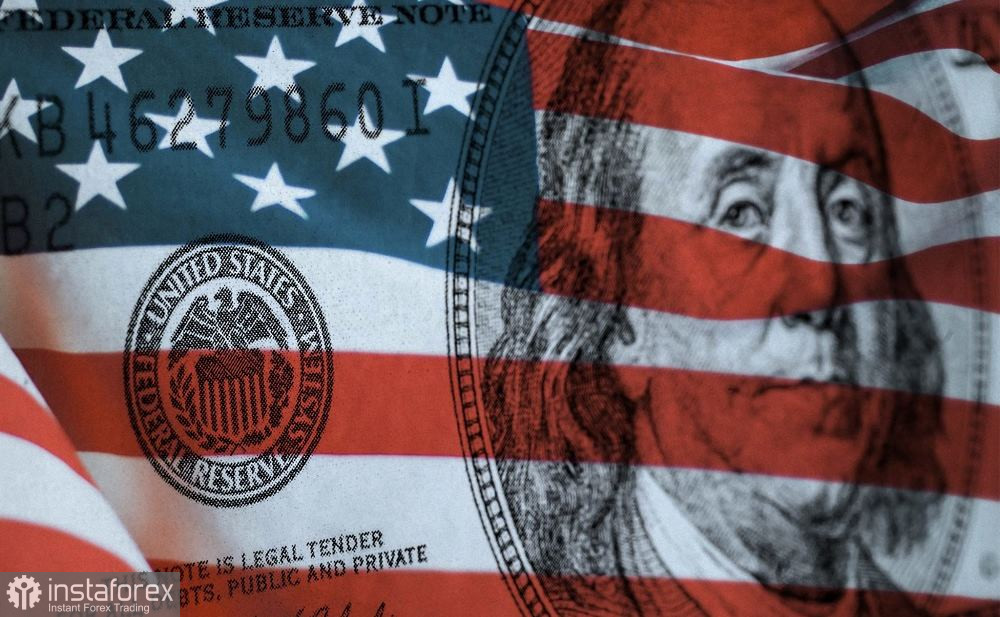The euro-dollar pair reacted erratically to the latest US GDP report. Initially, the price fell to the lower limit of the 1.0850-1.0950 range, then returned to the area of the 9th figure, but eventually returned to the 1.0900 mark. The most important macro data did not help EUR/USD traders to determine the vector of price movement. Bulls could not overcome the resistance level of 1.0950 (the upper line of the Bollinger Bands indicator on the daily chart), bears, in turn, could not even test the lower limit of the price range (1.0850), within which the pair has been trading for the second straight week. Conflicting signals of the report did not allow market participants to prioritize the downward or upward direction.

In my opinion, bullish sentiment will remain, although the attack on the limits of the 10th figure is on hold for now, probably, until the February FOMC meeting. And yet, despite the bears' pressure, the pair is still trading within the above-mentioned price range. This suggests that traders "do not trust" the greenback and do not risk to keep short positions when approaching the target of 1.0850.
Conflicting reports
It is quite understandable that both bulls and bears are indecisive, because the latest GDP report is controversial. On the one hand, it came out in the green zone, on the other hand - the US economy growth slowed down in the fourth quarter compared to the rates of the third quarter.
Thus, the US economy grew by 2.9% in the fourth quarter, exceeding estimates of 2.6%. The difference is relatively small, but the green part of the data played its part: 10-year bond yields rose, the S&P 500 futures sagged, and the dollar strengthened its position across the board in the moment.
The structure of the report suggests that consumer spending, which accounts for 68% of GDP, increased by 2.1% during this period. The growth rate of this component slowed down somewhat (in the third quarter, the indicator reached 2.3%), but for the third consecutive quarter it exceeded the 2% level. Take note of the growth of consumer spending, investment in private goods, an increase in government spending and investment in fixed assets of non-residential funds. Among the most noticeable disadvantages are a significant decline in investment in fixed assets (by almost 27%) and a decline in exports.
The dollar also received support from another report. US durable goods orders jumped more than 5.6% in December 2022, coming much higher than the market estimate of 2.4%. According to analysts, this was fueled by a flush of new contracts for Boeing passenger planes. Excluding the rebound in orders for transportation equipment, durable goods orders edged down by 0.1%. This report was published during the US session.
After the fact
Thursday's macro data did not dramatically change the situation for the pair despite their importance. Traders are still certain that the Federal Reserve will raise the interest rate by only 25 points at the end of February meeting. According to the CME FedWatch Tool, the probability of realization of this scenario is estimated at 99%. As for the March meeting, the preliminary results are even more interesting: the probability of a 25-point hike is estimated at 85%, while the probability of maintaining it is 14% (and just 1% chance of a 50% rate hike at once). In other words, even after the latest report, the market hypothetically allows for the possibility that at the March meeting, the members of the US central bank will keep the rate at the February level.
Also keep in mind that there will be another important release in the US on Friday, January 27: the benchmark PCE index. According to early projections, Friday's report will show a further slowdown in the growth of the index. Thus, on an annualized basis, the index should come out at 4.4%. If the estimate is confirmed (not to mention the lower values), then we can talk about a stable trend (consecutive three-month decline), amid a slowdown of the consumer price index and the producer price index. Growth or deceleration of this index will play an important role, especially in the light of contradictory data on the growth of the U.S. economy.
Conclusions
Despite the fact that the market interpreted the latest macro data in favor of the dollar, the bears could not build on their success and failed to cross the lower limit of the established price range of 1.0850 - 1.0950 (Tenkan-sen line on D1 - the upper line of the Bollinger Bands indicator on the same chart). This suggests that short positions in the pair are still too risky. In my opinion, the pair will keep striving to consolidate in the area of the 9th figure, that is why it would be better to consider the bearish declines as an opportunity for opening long positions. If the underlying PCE index disappoints the dollar bulls, they will probably try to approach the upper limit of the 1.0850-1.0950 range.
 English
English 
 Русский
Русский Bahasa Indonesia
Bahasa Indonesia Bahasa Malay
Bahasa Malay ไทย
ไทย Español
Español Deutsch
Deutsch Български
Български Français
Français Tiếng Việt
Tiếng Việt 中文
中文 বাংলা
বাংলা हिन्दी
हिन्दी Čeština
Čeština Українська
Українська Română
Română

